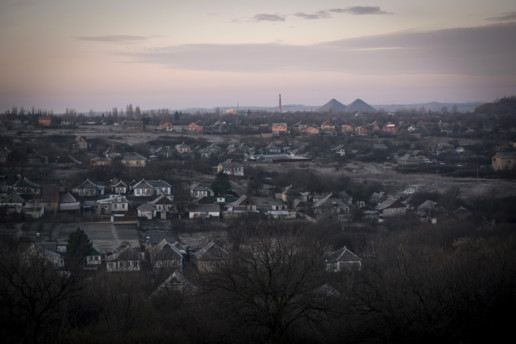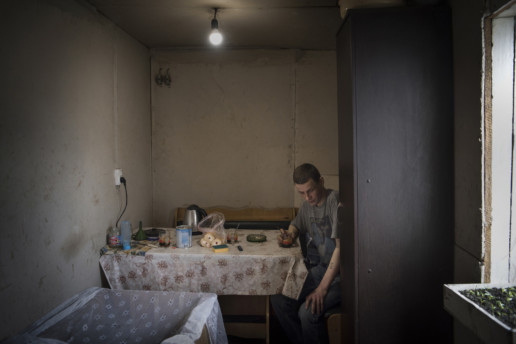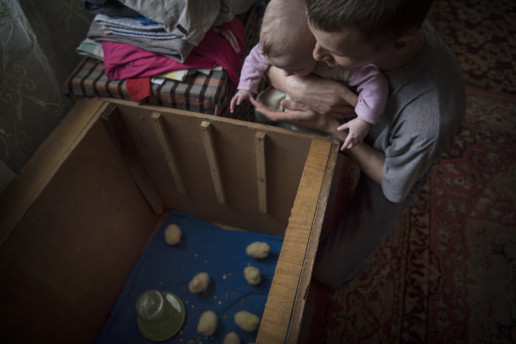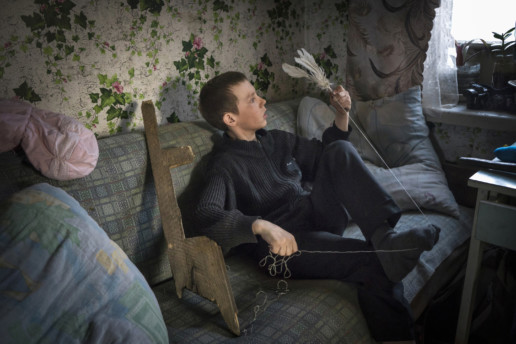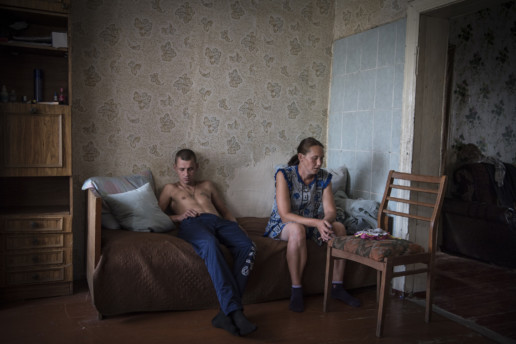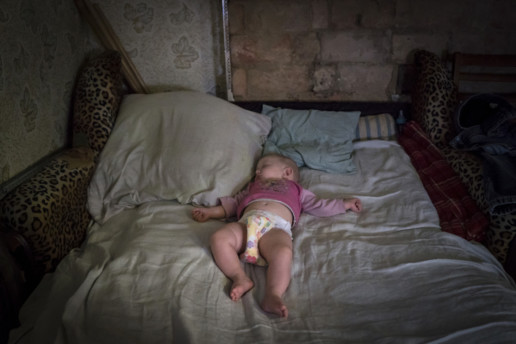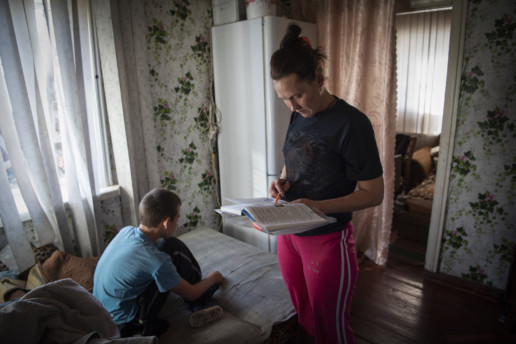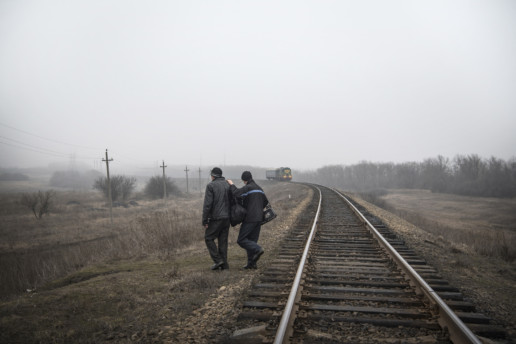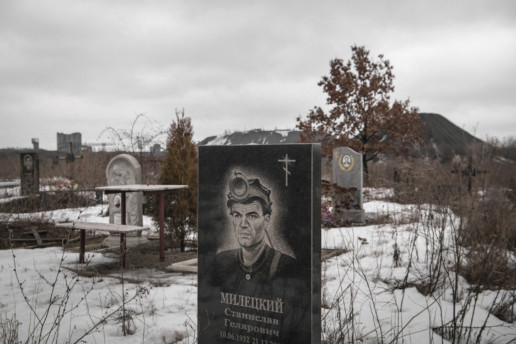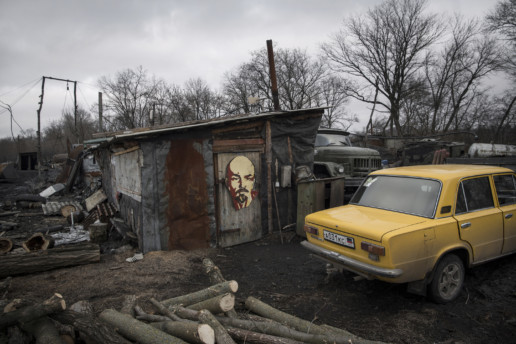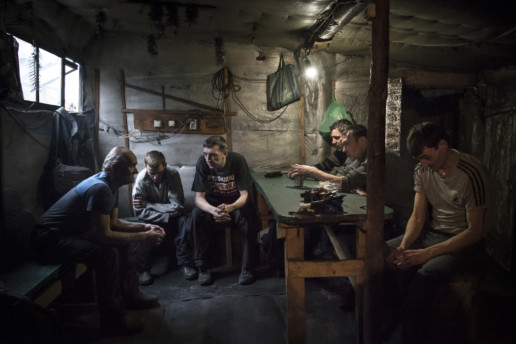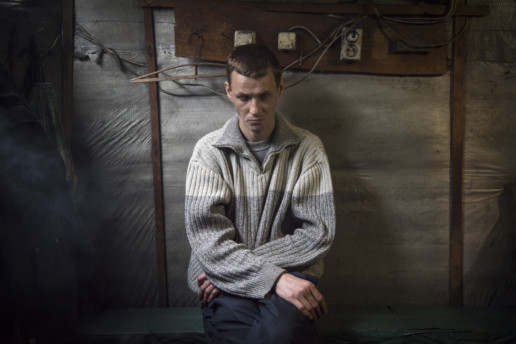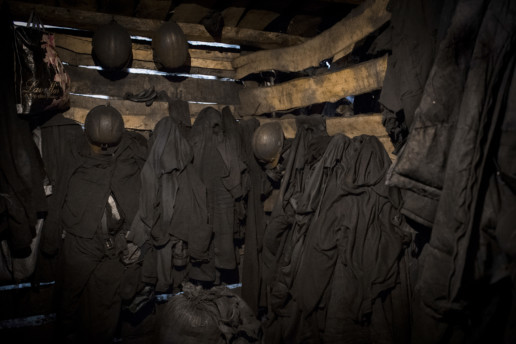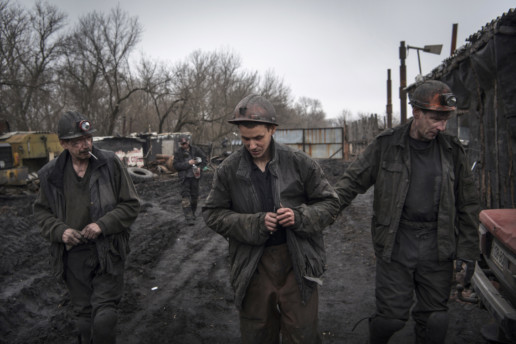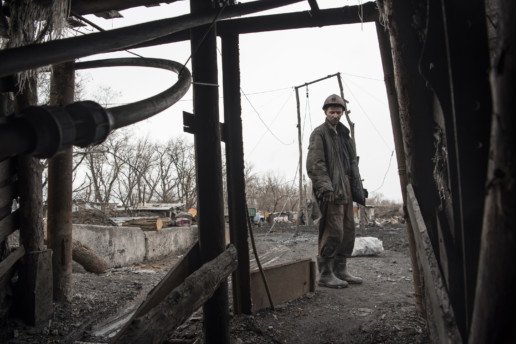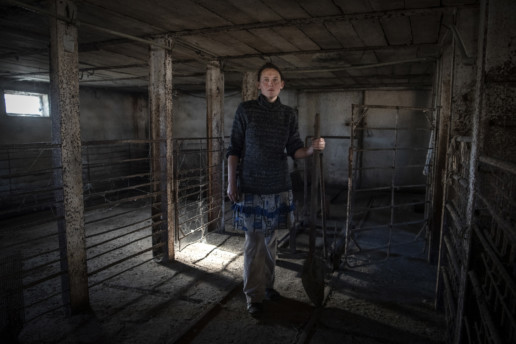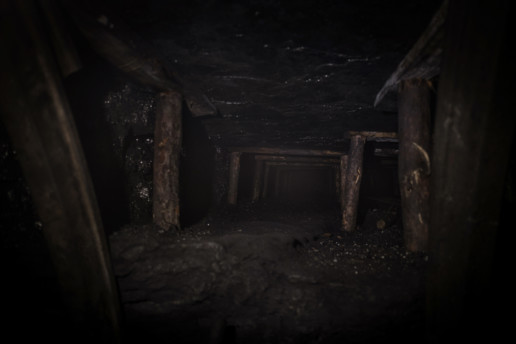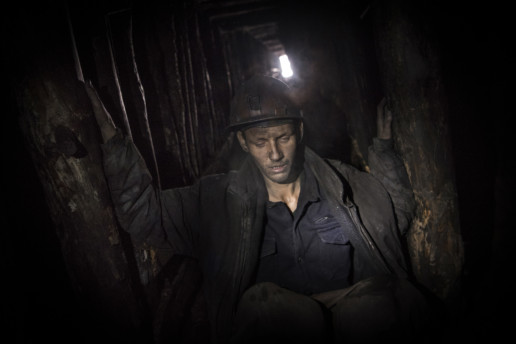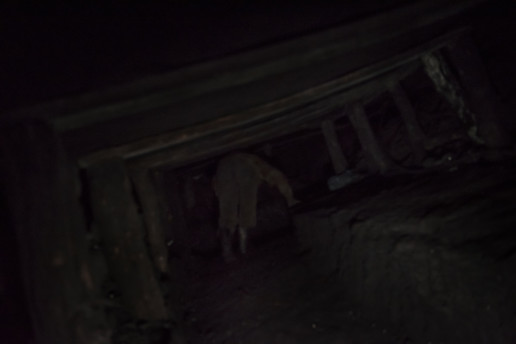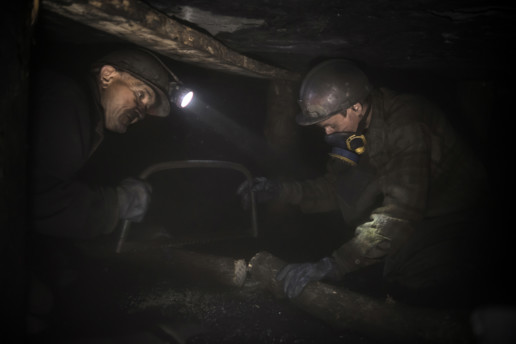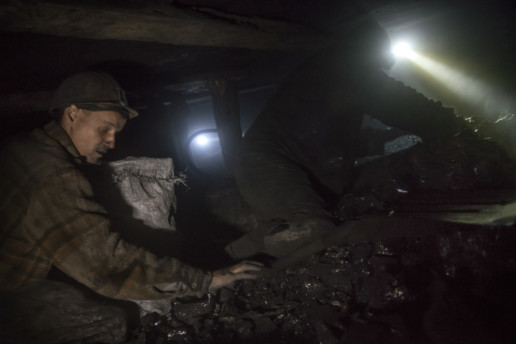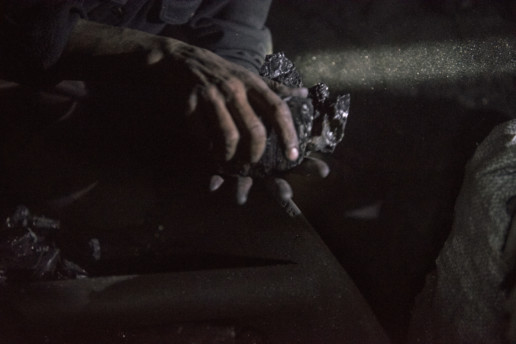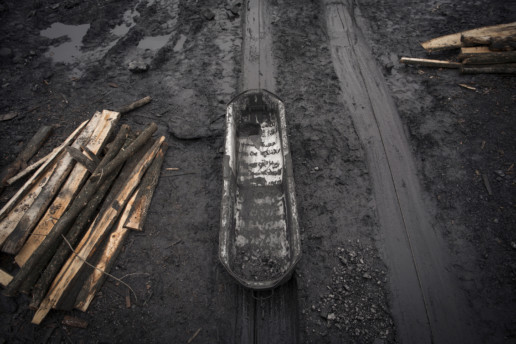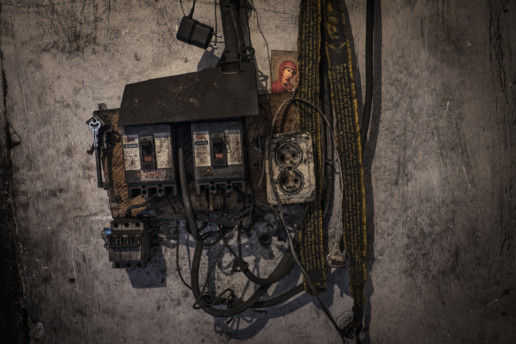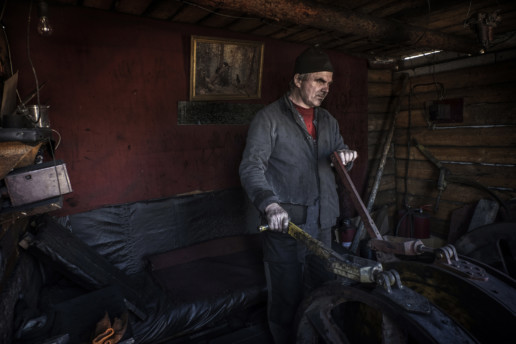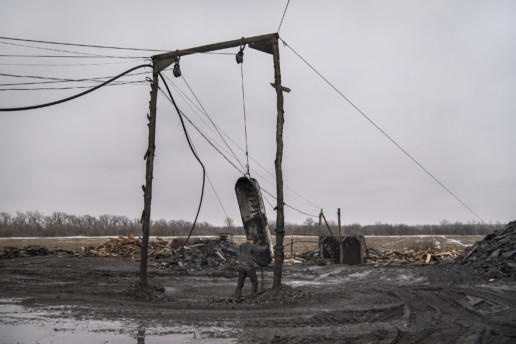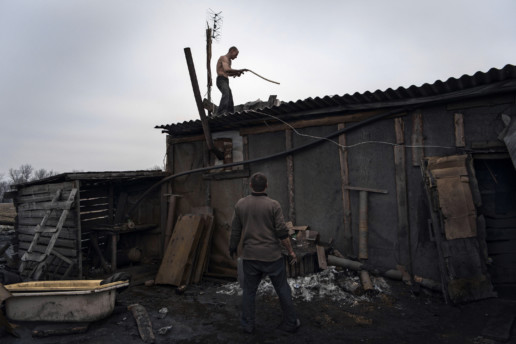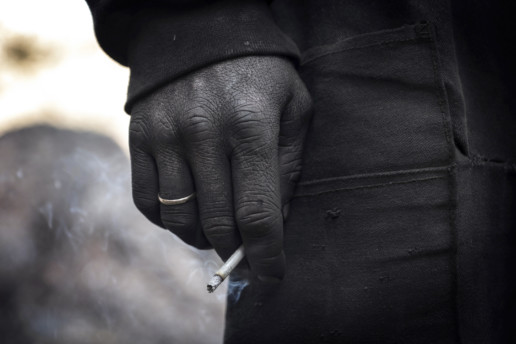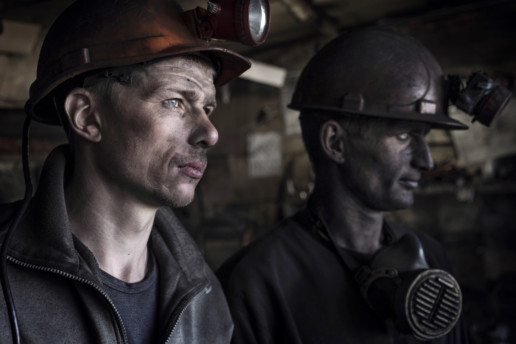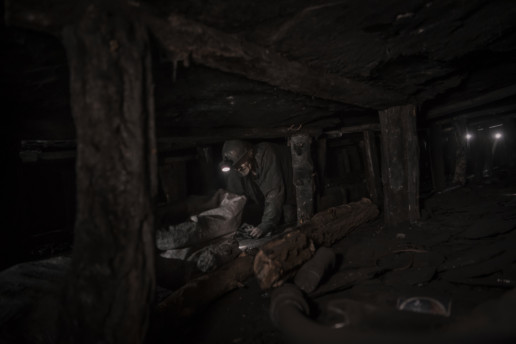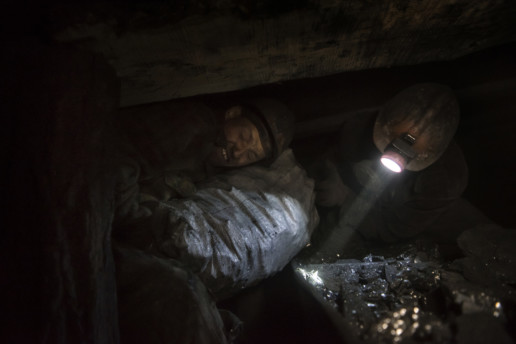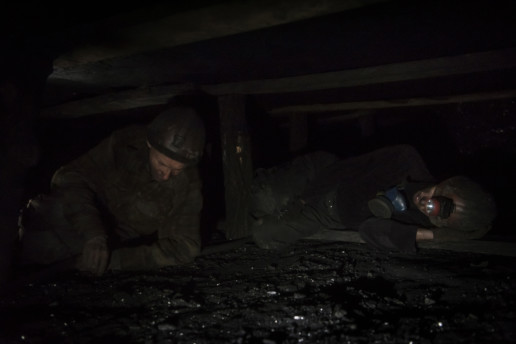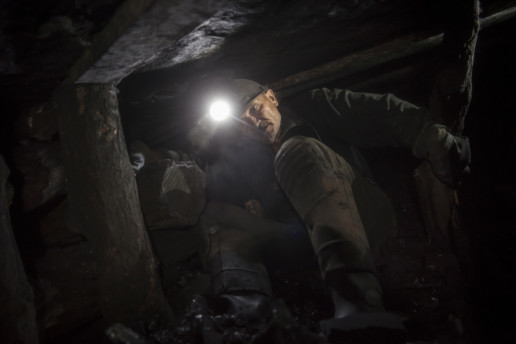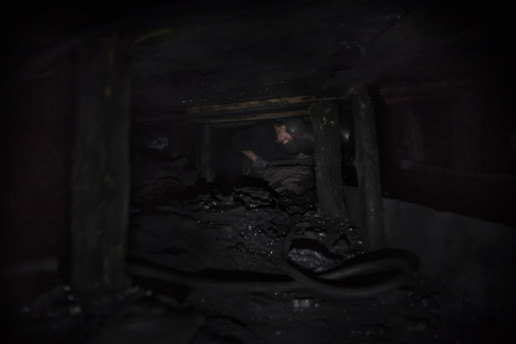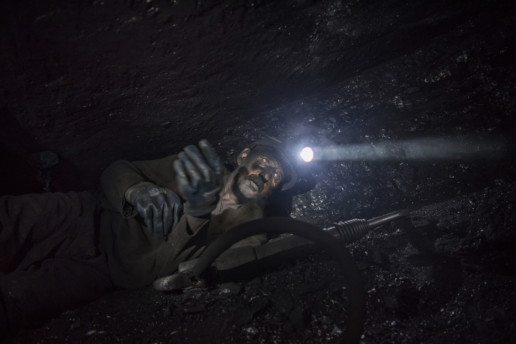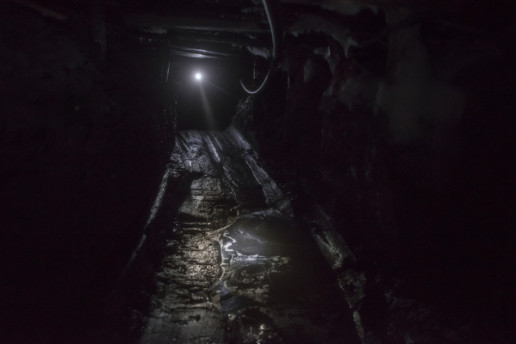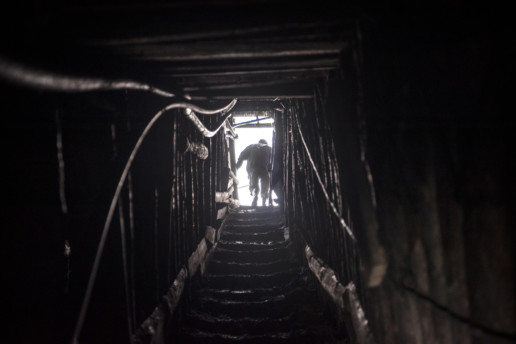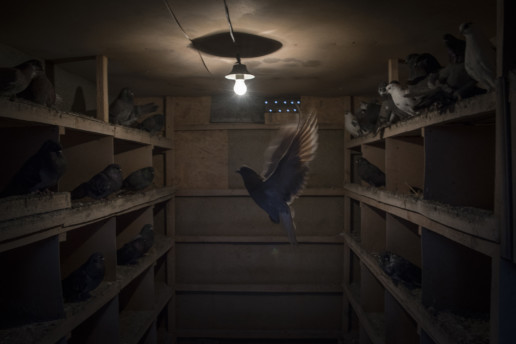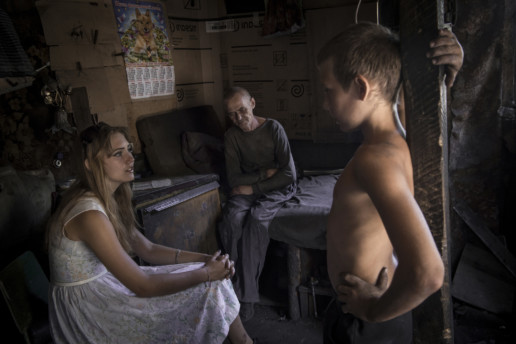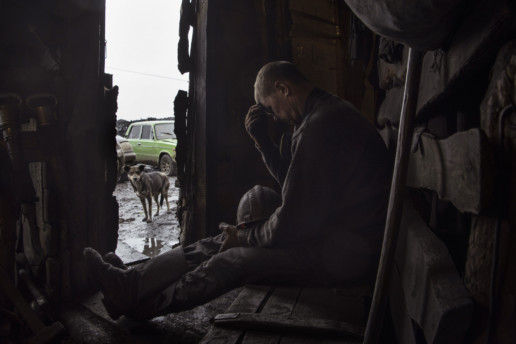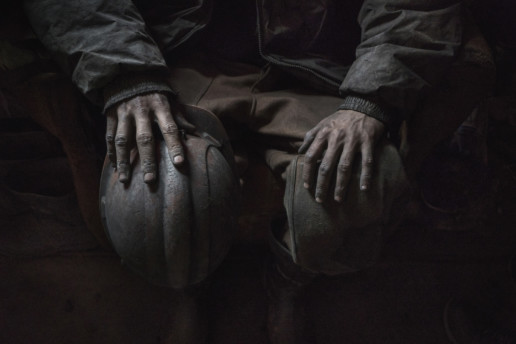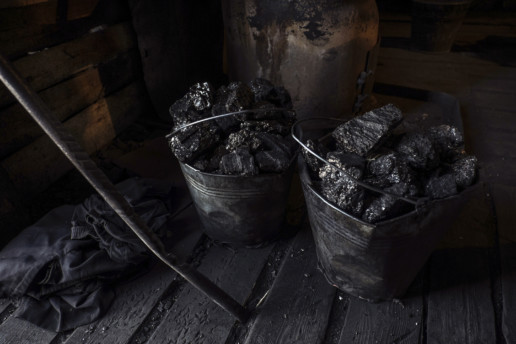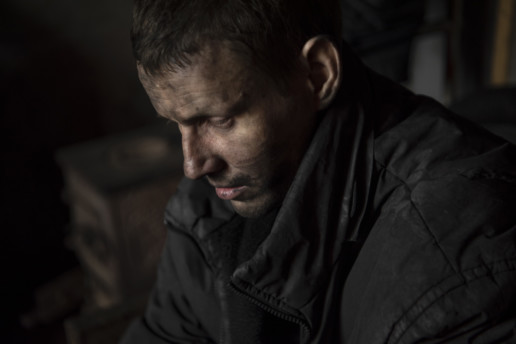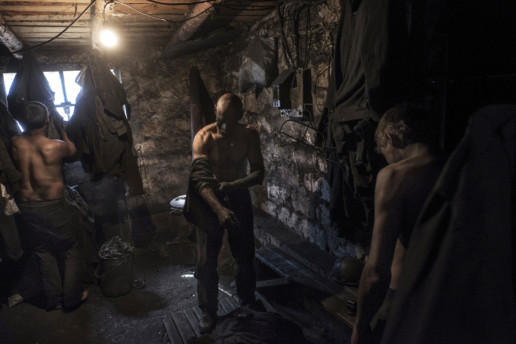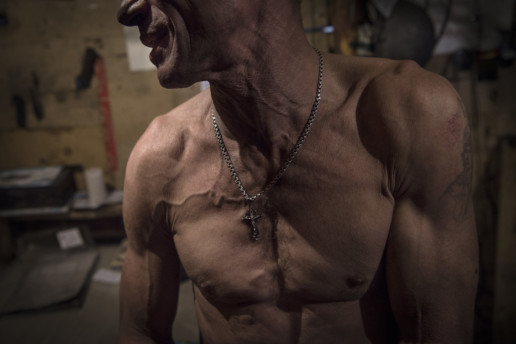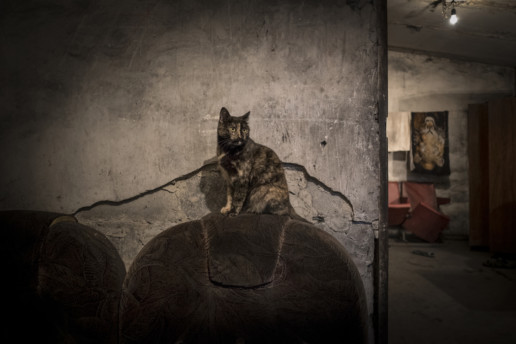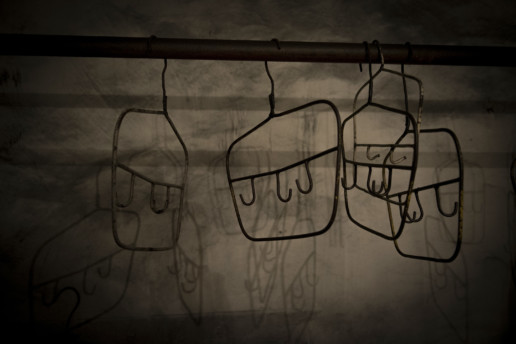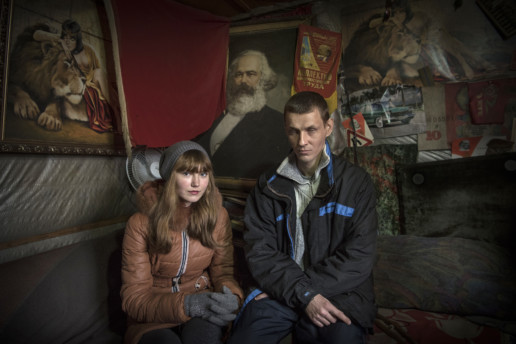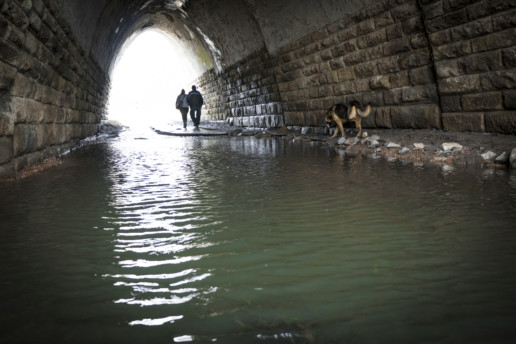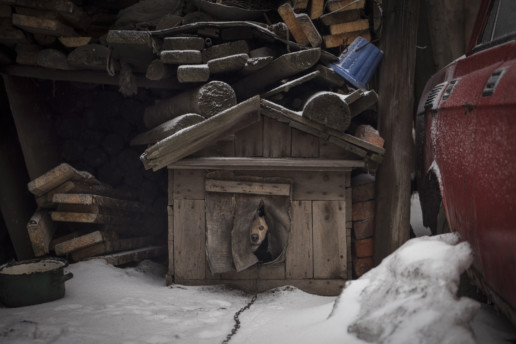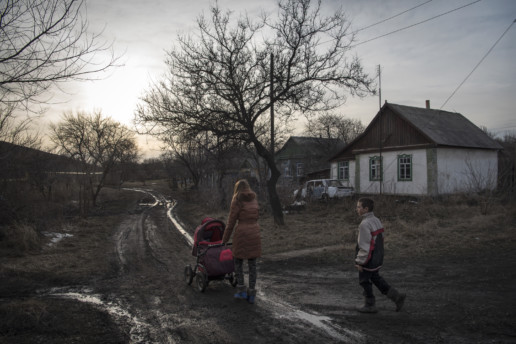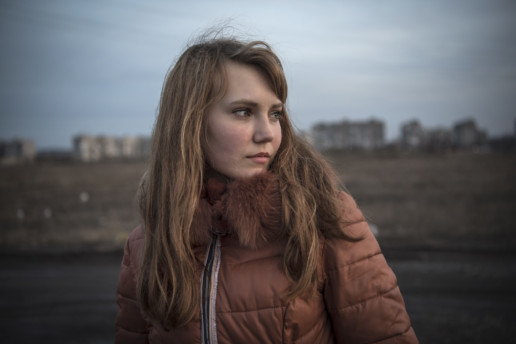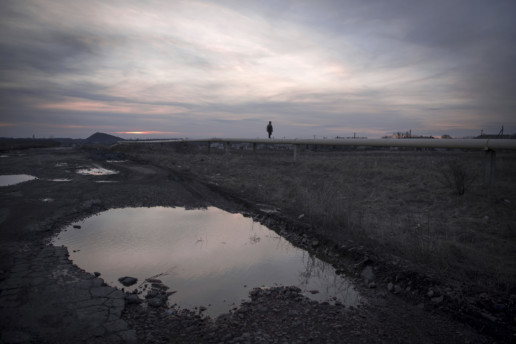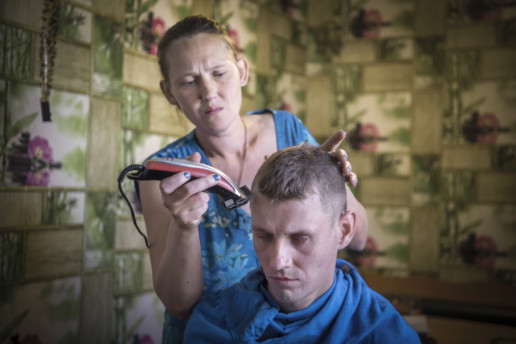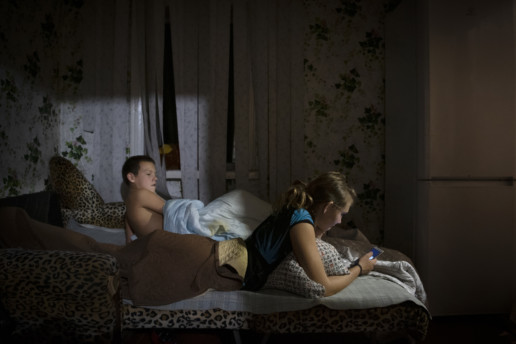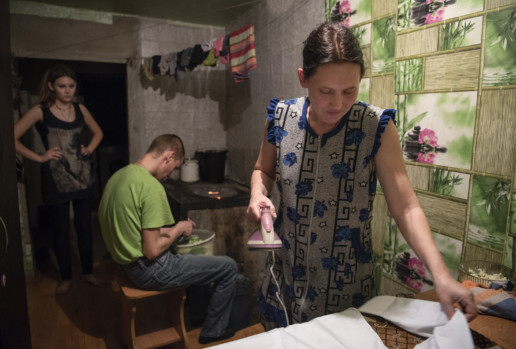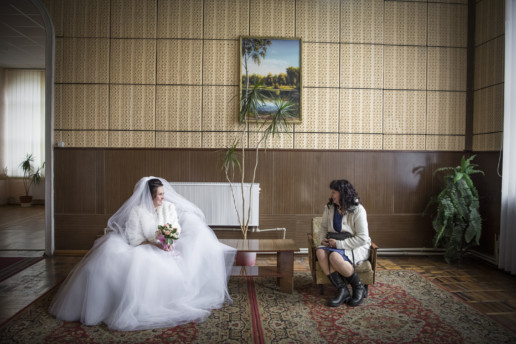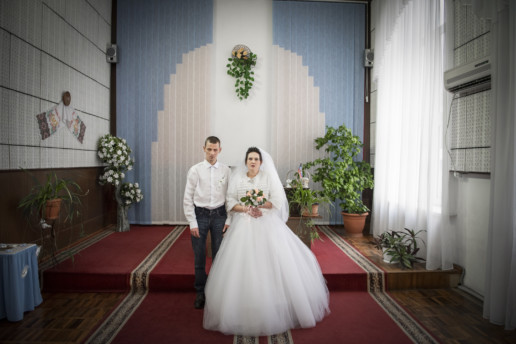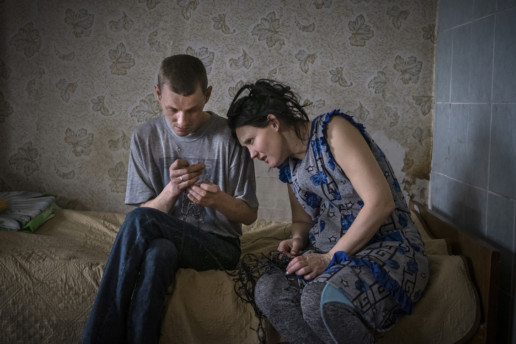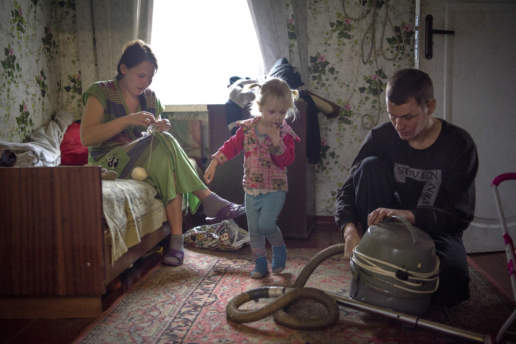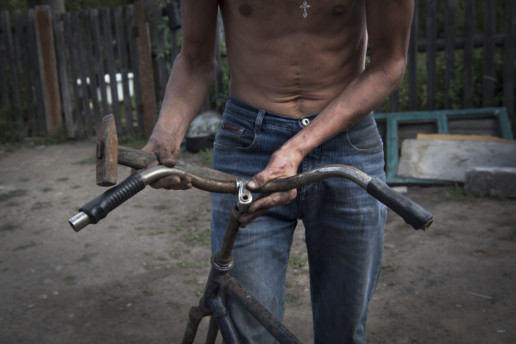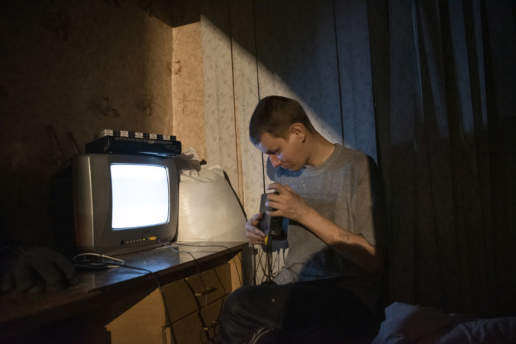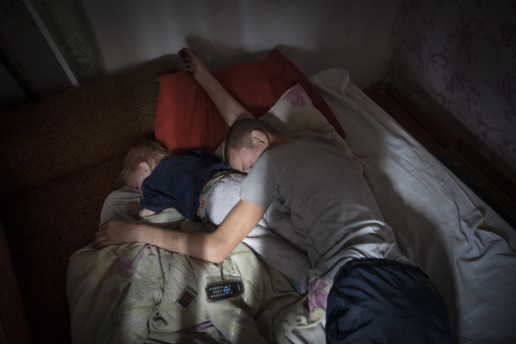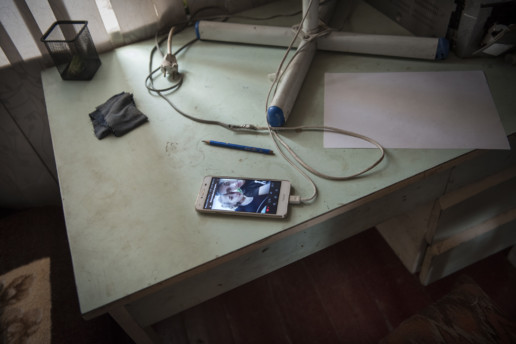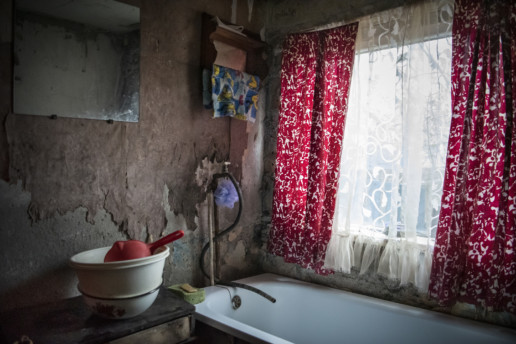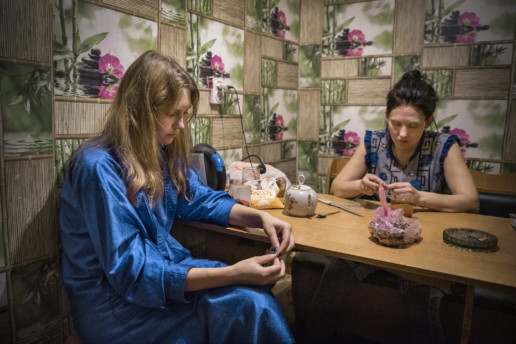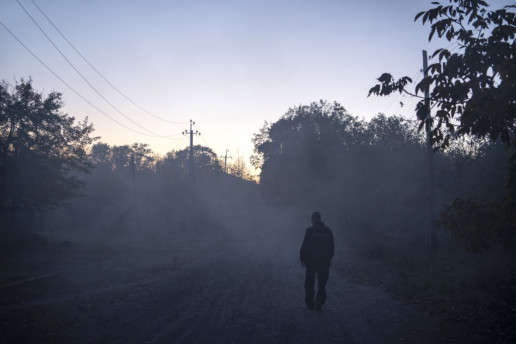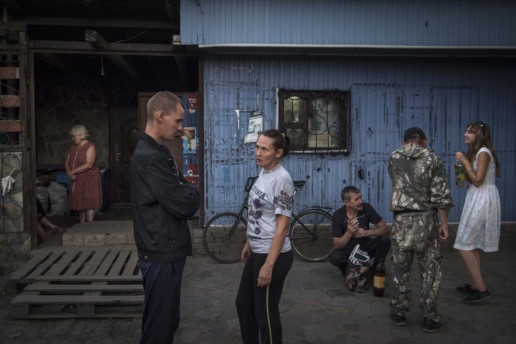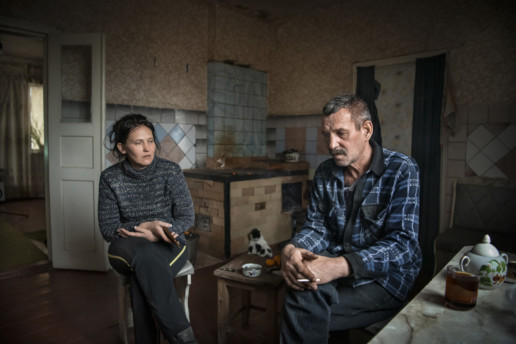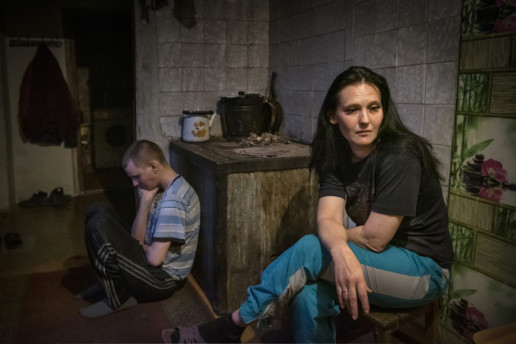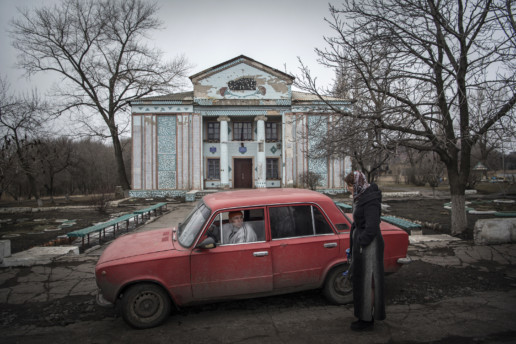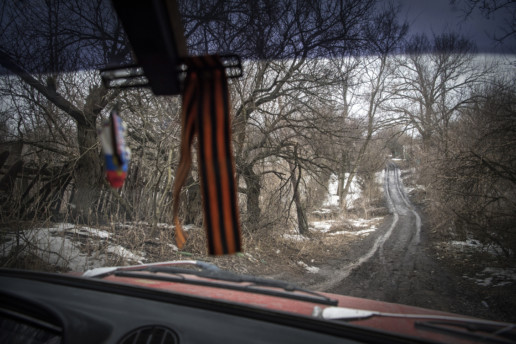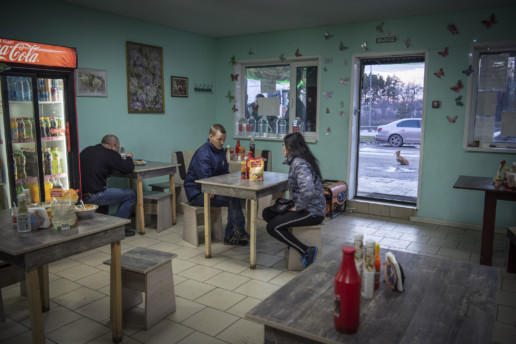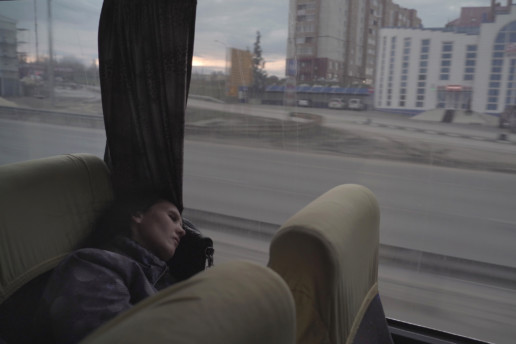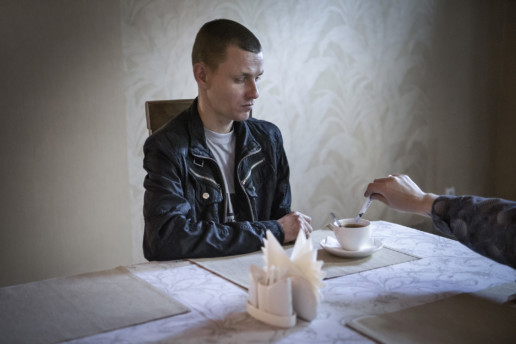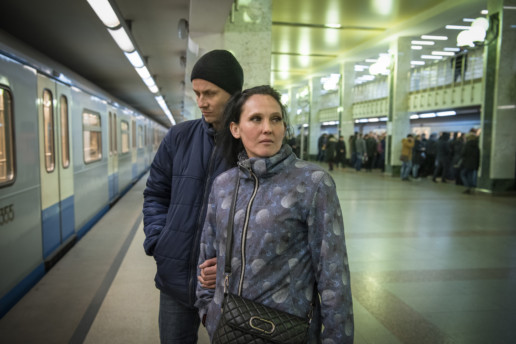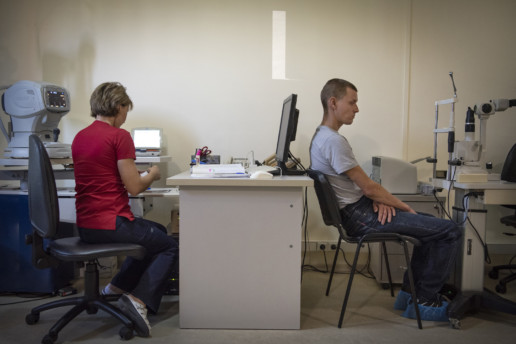Donbass stories - Sasha
Several tens of thousands of dead and wounded, over a million refugees. The civil war in Donbass has literally erased entire cities and villages from the map, staining with blood the soil of the European continent for the first time in the twenty-first century.
Sasha is a sightless 31-year-old miner. He works in one of the many independent (kopanki) mines located around the small town of Torez. Raised with three brothers in a dysfunctional family, Sasha lost his sight when he was 11, because of a very bad accident.
After a long cohabitation, he married Evgenija (Genia), who had two children – Valerija (15) and Alexander (11) – from a previous marriage. One year ago their third child, Anja, was born.
Due to the conflict, the zootechnical farm where they both worked closed down, leaving all the workers without jobs. Because of the economic crisis resulting from the war, many people from the area were forced to choose between joining the separatist militias and trying to get hired at one of the dozens independent coal mines surrounding the city of Torez.
In this part of the country the economic crisis is more severe than elsewhere; on the one hand, the civil war has ground the whole area’s economy to a halt, and on the other hand, coal’s prices have plummeted from 100$ per ton to 30$.
But Sasha never gave up, and he didn’t took to drink as Stachanov – the Soviet Union hero who ended his days, defeated and forgotten, in the same Torez.
Nontheless, Sasha remained unemployed for a long time, because nobody would trust hiring a blind man – least of all mines managers – even if his determination and high productivity were widely known. Then, one day he met a Tartar called Ildar, owner of a kopanko, who offered him a job.
Since then, Sasha goes to the mine every day, at 6:30 a.m., led by his father, a miner as well, and goes back home eight hours later with his wife, or one of his elder children. From his house to the mine it’s a 30-minute walk, through fields and woods.
The mine where Sasha works is a thick net of underground tunnels that are never higher than 4 feet and in some places are less than 1.6 feet. These tunnels run under a small natural pond and go as deep as 300 yards. This means that in many places the mine is flooded, which makes it even harder for Sasha and his colleagues to reach the mineral vein.
Sasha can go down the mineshaft as quickly and as nimbly as his collegues: despite his disability, he has learned to navigate confidently the underground maze, to avoid obstacles and to dodge dangers posed by the uneven beams of the roof, the puddles of water, the slippery clay and the extraction devices placed along the path.
His mental map of the mine is made of a continuous flow of sensations that take him, one orderly step after another, to the mine’s core.
Sasha’s task is to pour with a shovel the coal, that’s been broken to pieces with a jackhammer, into steel tanks that will bring it to the surface.
Sqeezed in a cavity less than 15 feet high, surrounded by the deafening noise of pneumatic drills, covered with coal powder, and immersed in total darkness, made even deeper by his blindness, Sasha works ceaselessly eight hours a day, alongside his collegues, for a weekly wage of about 5000 roubles (75 euros), in addition to his disability pension of 4000 roubles.
A team of 4 workers can produce up to 5 tons per day, that are immediately placed on the domestic market.
Accidents are extremely frequent, as it’s well known despite the fact that there are no available official statistics; in the same fashion, there is no available documentation regarding the disease and mortality incidence – well above national average – among miners due to poor working conditions,.
Nontheless, kopankas remain the only source of income for thousands of families.
According to specialists who have visited him through the years, Sasha’s blindness is reversible and could be cured with a corneal transplant.
Recently, Sasha has decided to go for the surgery that could help him regain his sight.
He and his wife went to the Fyodorov clinics, in Krasnodar and then in Moscow, to undergo preoperative testing. Unfortunately, his healing process is slow and full of uncertainties because of the high cost of the treatment.
Maybe one day, upon exiting the mine, Sasha will be able to smile along with his collegues, on seeing the sunlight again, after eight hours spent in darkness.
